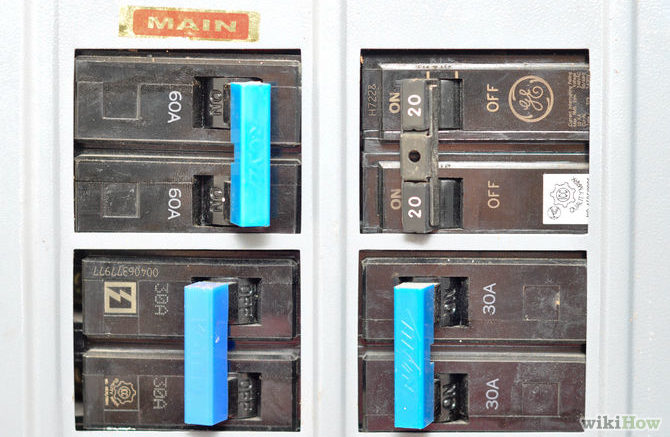As DIYers, we all know that we skip steps. We’re usually aware of it but we think it won’t matter. I’ve seen a lot of DIY work (and done a lot of DIY work) that is as good as pro quality work. It would pass any code or any inspection you’d want to do. On the other hand, I’ve seen a lot of work that really should have been done by a professional. Mostly it doesn’t matter, because safety isn’t really involved. However, when you’re talking about electricity, safety is ALWAYS involved.
Stating the obvious
Always always turn off the circuit breaker when you’re doing anything electrical. Turning off the switch is not enough. Some homes are wired to pass electricity through an outlet even if the switch is off, by passing a second “hot” wire through. You can short out other things in your home and more importantly hurt yourself! Keep in mind that the shock you get may even make it hard for you to move, so you won’t be able to stop being shocked.
Just turn those breakers off. I don’t generally recommend playing with circuit breakers especially in older homes. They’re not designed as on/off switches. But turning the breaker off before doing any work is just smart. If the breaker can’t survive a flip every so often, it should probably be replaced anyway.
A properly mapped buzz box
How many of us know for sure which outlet is on which breaker? If you’re lucky, there’s a handwritten card or sticker that gives you some idea. But home wiring can be weird. There is one outlet in my kitchen (remodeled by a previous DIYer) that goes to the breaker used for exterior outlets. There’s one outlet in my home office which goes to a completely different subpanel.
If you’re not sure which breaker goes to which outlets, it’s a good time to get out there to the breaker box and figure it out. It’s easy if you have a friend inside the house who can help you, that way you don’t have to run back and forth all the time. Cell phones make this incredibly easy, although if you do have a cell phone signal booster you’ll have even better results. (Of course if you flip the breaker that the booster’s connected to, it won’t work.)
Even simple repairs can turn into a nightmare unless you flip that breaker. Listen to your friendly blogger, he’s been zapped once or twice and it wasn’t fun!
Keeping the timing in mind
One thing to consider, if you have others in the home, is the lead time after you turn off a breaker. As a general rule, most home electronics retain electricity for about 30 seconds after the power goes out. If you’re looking to do something with them, wait at least that long. On the other hand, things like your home internet, satellite TV box, or that sort of thing can take a few minutes to become completely usable after you turn the power back on. It’s just something to consider before saying “I’m going to flip the breaker but you should be back in business after a minute.”
Oh, by the way, if you need general purpose testing equipment or anything else for your home project, check out the great selection at Solid Signal! We have the best tools for DIYers. We also have tons of free tech support. Call the experts in our Detroit-area offices. We’re here during East Coast business hours. The number is 888-233-7563. If it’s after hours, no problem! Fill out the form below. Someone on the team will get right back to you!

